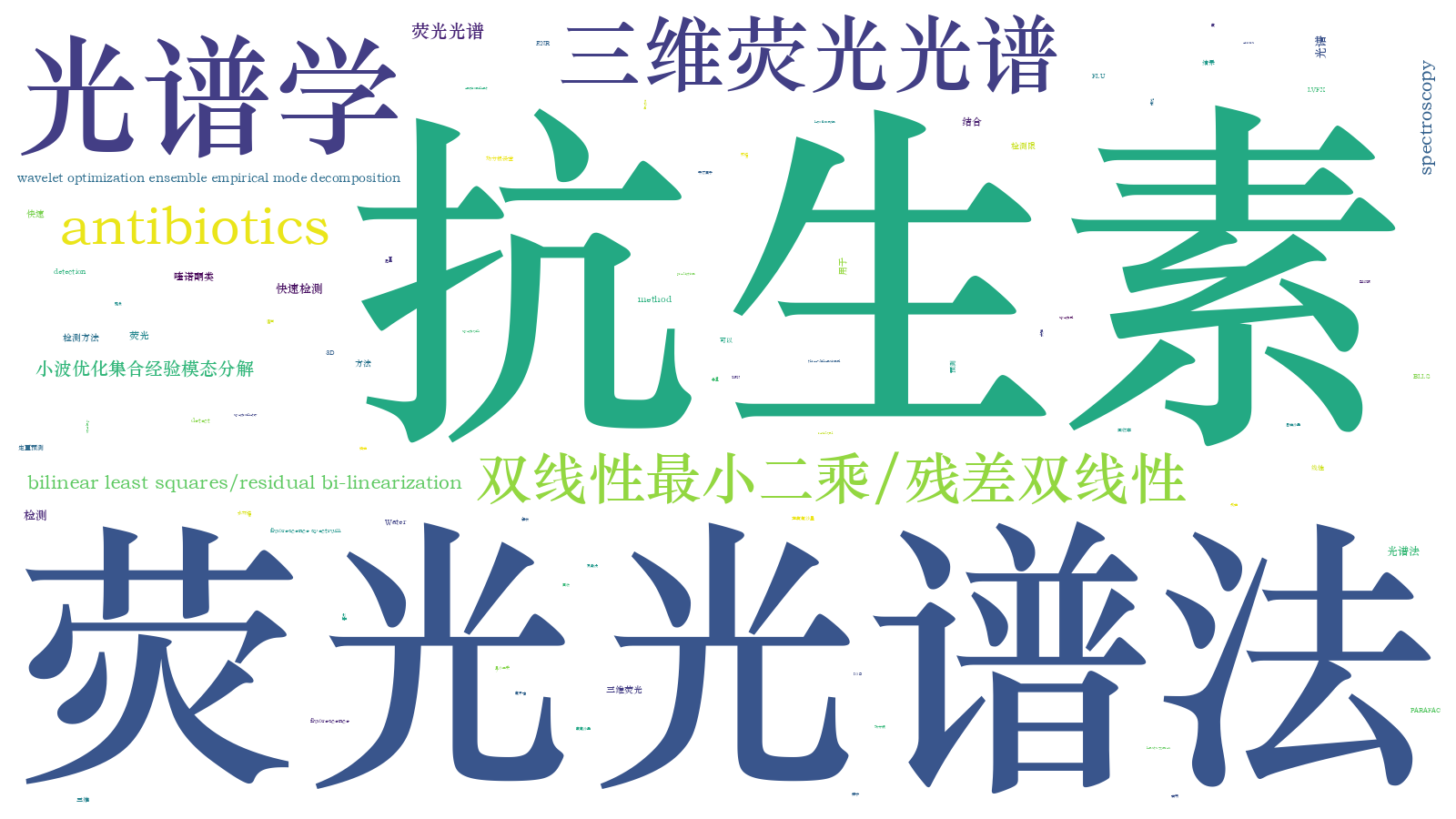光学学报, 2020, 40 (9): 0930001, 网络出版: 2020-05-06
荧光光谱法结合BLLS/RBL用于快速检测水中喹诺酮类抗生素  下载: 1228次
下载: 1228次
Rapid Detection of Quinolones in Water Based on Fluorescence Spectrometry and BLLS/RBL
光谱学 双线性最小二乘/残差双线性 小波优化集合经验模态分解 抗生素 spectroscopy bilinear least squares/residual bi-linearization wavelet optimization ensemble empirical mode decomposition antibiotics
摘要
为了快速检测水环境中的喹诺酮类抗生素,将三维荧光光谱法结合双线性最小二乘/残差双线性算法(BLLS/RBL),用于检测水中的氟甲喹(FLU)、恩诺沙星(ENR)和左氧氟沙星(LVFX)。该方法不仅可以准确解析出光谱重叠现象严重的三种抗生素,而且与平行因子方法(PARAFAC)相比,可以得出更可靠的定量预测结果。BLLS/RBL预测的FLU、ENR和LVFX的平均回收率分别为98.46%、99.10%、101.69%,均方根误差(RMSE)为4.33、0.33、0.26 μg·L -1,灵敏度(SEN)为2.8×10 3、3.5×10 4、5.5×10 4,检测限(LOD)为0.72、0.06、0.03 μg·L -1。实验结果表明,三维荧光光谱结合BLLS/RBL是一种可靠的水中喹诺酮类抗生素的检测方法。
Abstract
To rapidly detect quinolones in a water environment, a method combining three-dimensional (3D) fluorescence spectrometry and bilinear least squares/residual bilinearization (BLLS/RBL) is proposed to detect flumequine (FLU), enrofloxacin (ENR), and levofloxacin (LVFX) in water. This method not only accurately analyzes three antibiotics having serious spectral overlap, but also obtains more reliable quantitative prediction results than parallel factor (PARAFAC) method. The average recoveries of FLU, ENR, and LVFX predicted by BLLS/RBL are 98.46%, 99.10%, and 101.69%, respectively. Moreover, the respective root mean square errors are 4.33, 0.33, and 0.26 μg·L -1; the sensitivities are 2.8 × 10 3, 3.5 × 10 4, and 5.5 × 10 4; and the limits of detection are 0.72, 0.06, and 0.03 μg·L -1. Results show that the 3D fluorescence spectrum combined with BLLS/RBL provides a reliable method for the detection of quinolones in water.
赵兴涛, 车先阁, 王书涛, 刘诗瑜, 苑媛媛. 荧光光谱法结合BLLS/RBL用于快速检测水中喹诺酮类抗生素[J]. 光学学报, 2020, 40(9): 0930001. Xingtao Zhao, Xiange Che, Shutao Wang, Shiyu Liu, Yuanyuan Yuan. Rapid Detection of Quinolones in Water Based on Fluorescence Spectrometry and BLLS/RBL[J]. Acta Optica Sinica, 2020, 40(9): 0930001.







